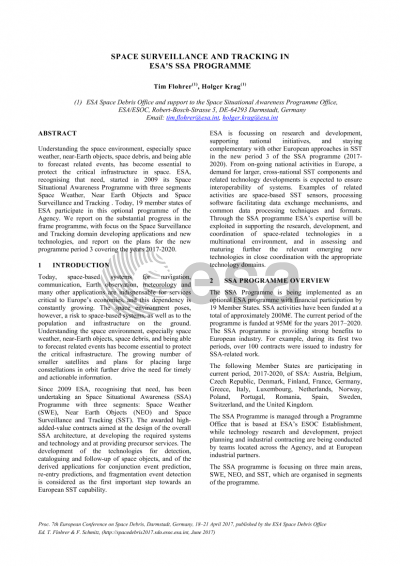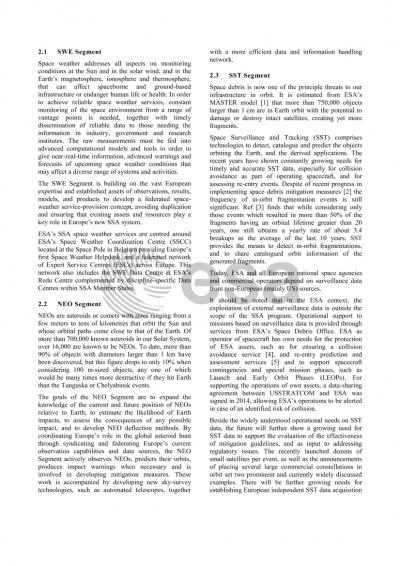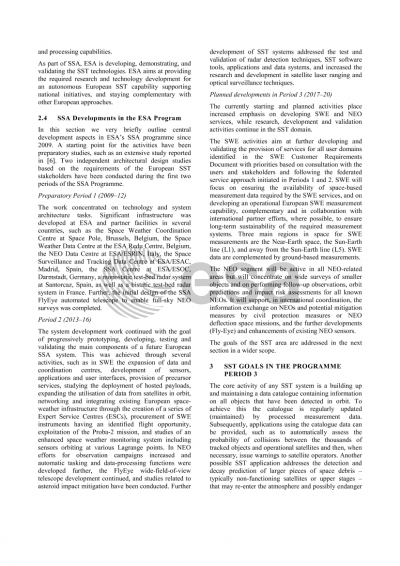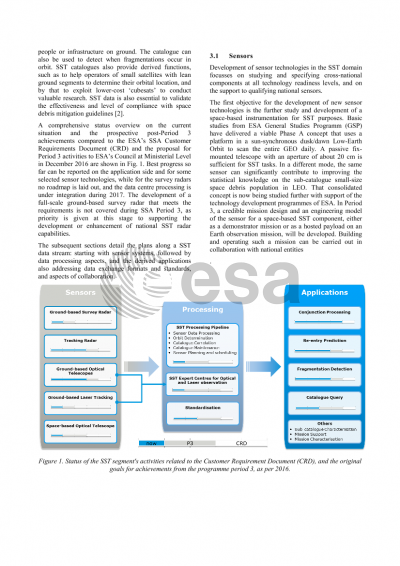Document details

Abstract
Today, satellites and space-based systems for navigation, communication, Earth observation, meteorology and many other applications are indispensable for services critical to Europe’s economies, and this dependency is constantly growing. The space environment however poses a risk to those satellites and space-based systems, as well as to the population and infrastructure on the ground. Understanding the space environment , especially space weather, near-Earth objects, space debris, and being able to forecast related events has become critical to protect the critical infrastructure. The growing number of smaller satellites and plans for large constellations being placed in orbit increases drive further the need for information.
ESA, recognising that need, since 2009 has been undertaking an Space Situational Awareness (SSA) Programme with three segments Space Weather (SWE), Near Earth Objects (NEO) and Space Surveillance and Tracking (SST). For industry and academia in the participating 18 member states of ESA the awarded high-added-value contracts aimed at the design of the overall SSA architecture, developing the required systems and technology and providing precursor services. In SST, the development of the technologies for detection, cataloguing and follow-up of space objects, and of the derived applications for conjunction event prediction, re-entry predictions, and fragmentation event detection is considered as the first important steps towards an European SST capability.
ESA’s is focussing on research and development, supporting national initiatives, and staying complementary with other European approaches in SST in the new period 3 of the SSA programme (2017-2020). From on-going national activities in Europe, a demand for larger, cross-national SST components and technology developments is expected to ensure interoperability of systems. Examples of related activities are space-based SST sensors, sensor and data centre processing software facilitating data exchange mechanisms, and common data processing techniques and formats. Through the SSA programme ESA’s expertise will be exploited in supporting the research, development, and coordination of space-related technologies in a multinational environment, and in assessing and maturing further the relevant emerging new technologies in close coordination with the appropriate technology domains.
We report on the substantial progress in the frame of ESA's SSA program in the SST domainwith focus on applications and developing new technologies, and on the plans for the new programme period.
Preview







